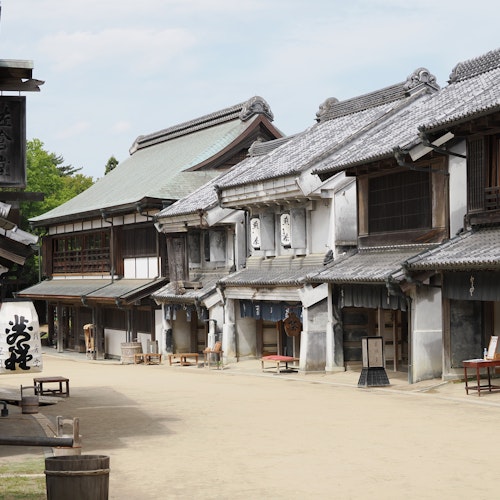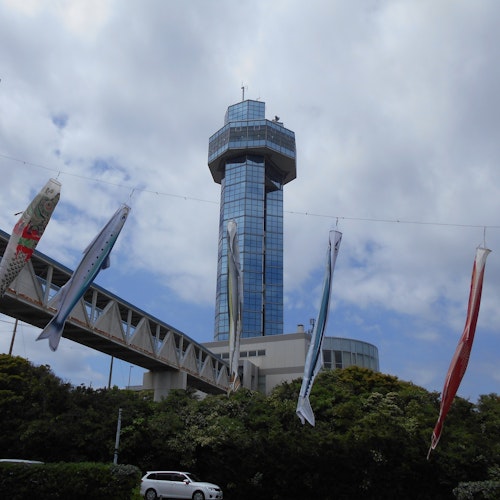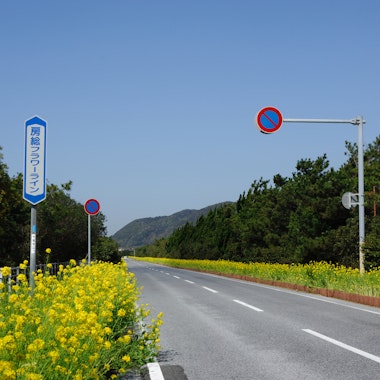
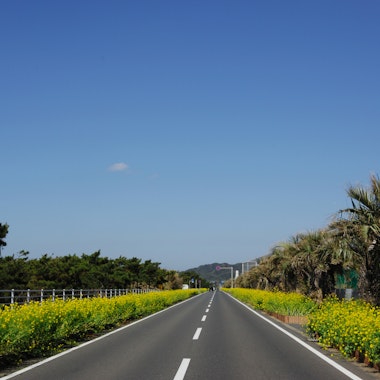
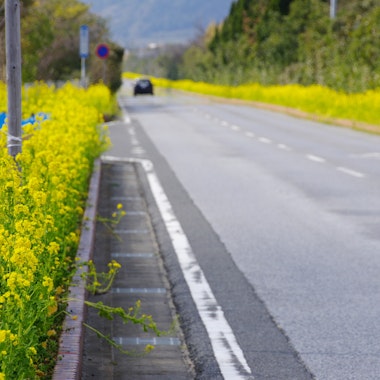
The Boso Flower Line was officially designated in 1966 as a combination of Highway 257 and Highway 410, creating a scenic coastal route that has since become one of Chiba Prefecture's premier tourist attractions. This 45-kilometer road stretches along the southern coast of the Boso Peninsula from Chikura to Tateyama, transforming a practical transportation route into a celebrated flower-viewing destination.
The Boso Peninsula's mild, Mediterranean-like climate provides ideal growing conditions for flowers, making the region particularly significant for Japan's flower tourism industry. The area gains special prominence from January to April when nanohana (rapeseed flowers) bloom in brilliant yellow carpets alongside the coastal road. Peak nanohana blooming occurs from mid-March to early April, though the route offers spectacular floral displays throughout much of the year.
Visitors experience a continuous 46-kilometer drive with panoramic ocean views on one side and rolling flower fields on the other. Several flower farms and parks are strategically located along the route, allowing travelers to stop and explore individual gardens and agricultural areas. The journey provides excellent photography opportunities, with the contrast between bright yellow nanohana fields, blue ocean waters, and distant mountain ranges creating iconic Japanese landscape scenes.
Since no railway serves this coastal area directly, buses run approximately hourly along National Route 410. JR buses connect Tateyama with Awa-Shirahama via Nojimasaki Lighthouse, while non-JR buses link Awa-Shirahama with Chikura Station. The JR bus service is covered by Japan Rail Pass, JR East Nagano Niigata Area Pass, and JR East Tohoku Area Pass. Travelers can reach the peninsula via JR Uchibo Line along the western coast or JR Sotobo Line along the eastern coast, typically changing trains at Chiba or Soga Station from Tokyo. Cycling along the coast provides an alternative transportation method for visitors preferring a more active exploration experience. The route is accessible by private vehicle, with parking available at major viewing points and flower parks. No admission fees apply to the public road sections, though individual flower farms and parks may charge separate entrance fees.
